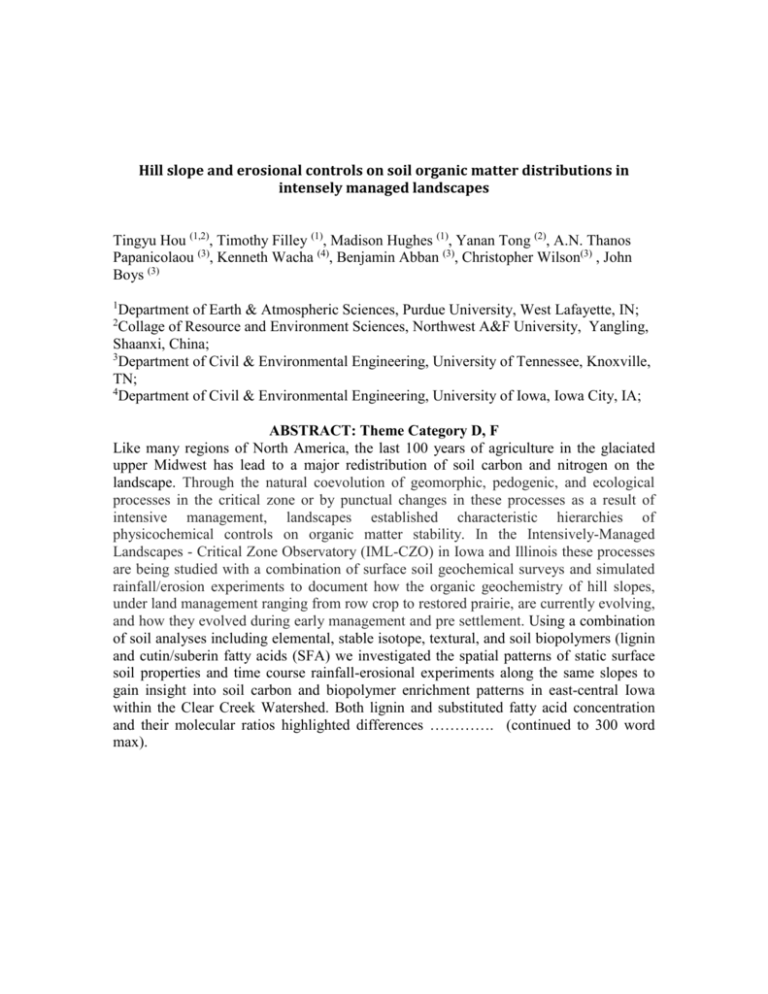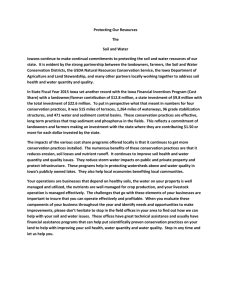Abstract Sample - Purdue University
advertisement

Hill slope and erosional controls on soil organic matter distributions in intensely managed landscapes Tingyu Hou (1,2), Timothy Filley (1), Madison Hughes (1), Yanan Tong (2), A.N. Thanos Papanicolaou (3), Kenneth Wacha (4), Benjamin Abban (3), Christopher Wilson(3) , John Boys (3) 1 Department of Earth & Atmospheric Sciences, Purdue University, West Lafayette, IN; Collage of Resource and Environment Sciences, Northwest A&F University, Yangling, Shaanxi, China; 3 Department of Civil & Environmental Engineering, University of Tennessee, Knoxville, TN; 4 Department of Civil & Environmental Engineering, University of Iowa, Iowa City, IA; 2 ABSTRACT: Theme Category D, F Like many regions of North America, the last 100 years of agriculture in the glaciated upper Midwest has lead to a major redistribution of soil carbon and nitrogen on the landscape. Through the natural coevolution of geomorphic, pedogenic, and ecological processes in the critical zone or by punctual changes in these processes as a result of intensive management, landscapes established characteristic hierarchies of physicochemical controls on organic matter stability. In the Intensively-Managed Landscapes - Critical Zone Observatory (IML-CZO) in Iowa and Illinois these processes are being studied with a combination of surface soil geochemical surveys and simulated rainfall/erosion experiments to document how the organic geochemistry of hill slopes, under land management ranging from row crop to restored prairie, are currently evolving, and how they evolved during early management and pre settlement. Using a combination of soil analyses including elemental, stable isotope, textural, and soil biopolymers (lignin and cutin/suberin fatty acids (SFA) we investigated the spatial patterns of static surface soil properties and time course rainfall-erosional experiments along the same slopes to gain insight into soil carbon and biopolymer enrichment patterns in east-central Iowa within the Clear Creek Watershed. Both lignin and substituted fatty acid concentration and their molecular ratios highlighted differences …………. (continued to 300 word max).











